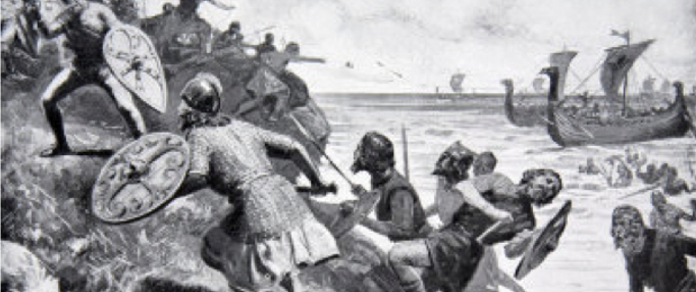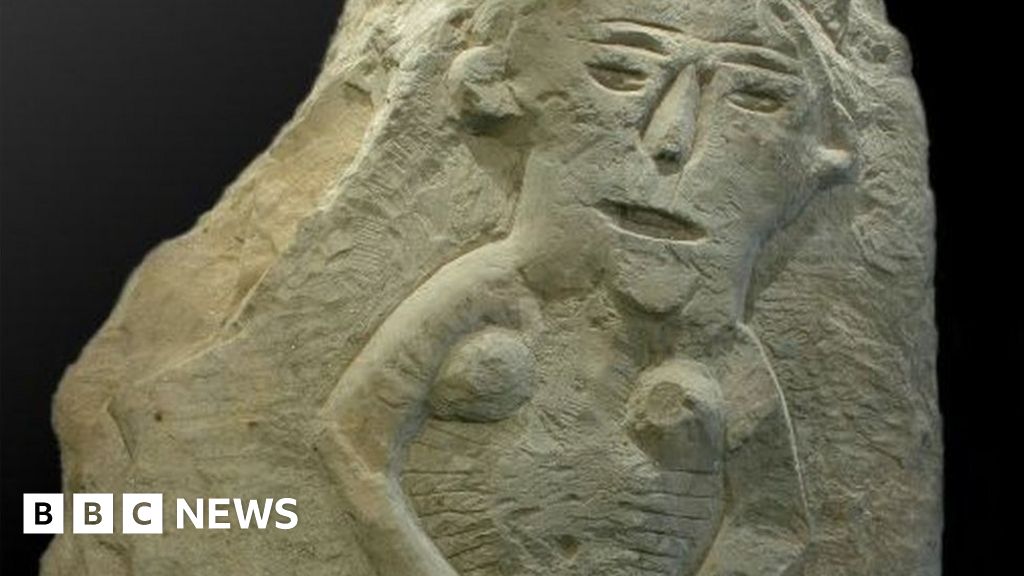
La Sedia del Diavolo - Devil's Chair, Rome
I was recently on one of my regular visits to Rome when I wandered into the ‘Quartiere Africano’ in the city’s north-eastern suburbs, where I beheld the once-dreaded La Sedia del Diavolo, or Devil's Chair. This structure was once in a lonely spot outside the city walls, but urbanisation has surrounded The Chair which looks rather forlorn nowadays. Not so in centuries past.
The monument began life as a mausoleum built to house the remains of an important Roman in the 2nd-century AD; generally assumed to be Elio Callistio, a freed slave in the retinue of the Emperor Hadrian. The building resembled a pedimented temple set on a podium base, with two levels of rooms supported by arches and with statuary niches. Over time much was lost, as brickwork, marble and decoration were pilfered to be reused. By the Middle Ages it looked much like it does now - a big, squat, chunk of masonry with horizontal arms.
The Chair became the lair of wolves and the notorious local bandits (see Dumas’ The Count of Monte Cristo for literary confirmation), who stalked the Campagna, killing, kidnapping, and robbing. The flickering satanic glow from their fires in the ruin made witnesses fear the Devil was abroad, observing the Papacy from his throne.

The Devils Chair Hidden Kabala Legend
The Devil’s Chair attracted all sorts of crackpots, would-be alchemists, charlatans, Satanists and other weirdos. Renaissance alchemist and self-proclaimed miracle-worker Leonard Thurneysser (1531-96), is said to have carved the word ‘KABALA’ on the sepulchre, with each letter hidden in a different spot. If you were ‘lucky’ enough to uncover the inscription, the observer gained magical powers to alter the course of their fate. Akin to Polanski’s 1999 motion picture, The Ninth Gate, one assumes.
Swearing Eternal Loyalty to the Goat-demon Mephistopheles
The 18th century mystic Marco Dominici (or Marcolino dei Prodigi as he styled himself) arranged orgies within the walls of The Chair*, where guests swore their eternal loyalty to the goat-demon Mephistopheles. Marco’s increasingly wild prophecies included predicting the downfall of the Holy Mother Church itself. No big surprise as after this particular punt he was soon arrested, thence to disappear from any records.
* Through a staircase, under the podium, it was possible to reach a semi-subterranean room, with a white mosaic floor.
Devil’s Chair Healing Remedy?
In the early 19th century, a shepherd by the name of Giovanni claimed to possess miraculous healing abilities, specifically for tummy troubles by using a ‘wonder tonic’ he created by crushing up bricks from the Devil’s Chair into a fine powder to be taken with water. But, after he ‘healed’ a young woman called Assunta from dysentery, he was accused of witchcraft by the church and fled the vicinity.

The superstitions about the Chair carried on until the last century, if not beyond. In the 1950s, locals petitioned the council to change the name of the piazza from Già Piazza del Sede del Diavolo to the less overtly creepy Piazza Elio Callistio (the name of Hadrian’s freedman).

Incidentally, there is another ‘Devil’s Chair’ in Italy, this time the Medieval ‘Devil’s Seat’ outside Motta Montecorvino (Apulia), actually looking more like a diabolic throne than its Roman sibling.

Satan’s Throne? - The Pergamon Altar (Turkey & Berlin)

‘I know where you dwell, where the throne of Satan is, and you hold fast to my name and you did not deny my faith even in the days of Antipas, my witness, my faithful one, who was killed among you, where Satan dwells.’ (’John of Patmos’, Revelation 2:12–13 81-96 AD)
“Where Satan dwells” is synonymous with “the throne of Satan,” a phrase that occurs earlier in the same verse. In fact, the Altar was commissioned by the Hellenistic King Eumenes II (220-and dedicated to Zeus and his daughter Athena, but in the apocalyptic Book of Revelation, Satan, corresponds to Zeus, the ruler of the gods, which is stretching it a tad.
Pergamon’s acropolis was especially steep, which may have inspired John’s imagination, appearing to him as most suitable for the throne of Satan, highest (and presumably biggest) of all fallen archangels, angels, evil spirits and demons.
In 1878, German engineer Carl Humann started official excavations on the ruins of the acropolis at Pergamon, which lasted until 1886. The relief panels from the Altar were transferred to Berlin and placed on display in the city’s Pergamon Museum.
Some have linked the Pergamon Altar to the Nazis and their love of all things occult, cod-classical and overbearingly monumental. One of Albert Speer's first works for the Nazi party was based upon the Pergamon Altar - The Nuremberg Zeppelinfeld.

Bearing a remarkable resemblance to the print from 1824:

A classics professor goes to a tailor to get his trousers mended. The tailor asks: “Euripides?” The professor replies: “Yes. Eumenides?”
Others Satanic Sit-Downs?
The Devil’s Seat, Shropshire, England

According to legend, on the longest night of the year, the Devil sits on his chair and summons all his local followers - witches, warlocks, imps, goblins, ghouls, and evil spirits, mostly- for a Black Mass and the election of Shropshire’s King (or Queen?) of Evil for the year. Which is surprisingly democratic of him, I guess.
Avebury, Wiltshire, England: The Devils Seat or Chair aka The Goddess Chair

If you see smoke rising from the chimney in the ancient stone, Old Nick is holding court; also if you’re daft/athletic enough to run round it counter-clockwise 100 times, He will appear to you.
An appropriate tune:
Stephen Arnell’s historical novel, ‘The Great One’:
https://www.amazon.co.uk/Great-One-Secret-Memoirs-Pompey-ebook/dp/B0BNLTB2G7



































